Daerah Khusus Ibukota Jakarta
Jakarta Capital Special Region
Jakarta
The Special Capital Region of Jakarta - Daerah Khusus Ibukota Jakarta (DKI Jakarta)
 The Special Capital Region of Jakarta – (DKI Jakarta) is the national capital and the largest city in Indonesia. Jakarta is the only city in Indonesia that has provincial-level status. Jakarta is located on the northwest coast of Java Island. In the past, several names were known, including Sunda Kelapa, Jayakarta, and Batavia. In the international world Jakarta also has the nickname J-Town, or more popularly The Big Durian because it is considered a city that is comparable to New York City (Big Apple) in Indonesia.
Jakarta has an area of approximately 664.01 km² (ocean: 6,977.5 km²), with a population of 10,557,810 people (2019). The Jakarta metropolitan area (Jabodetabek), which has a population of around 28 million, is the largest metropolitan area in Southeast Asia or second in the world.
The Special Capital Region of Jakarta – (DKI Jakarta) is the national capital and the largest city in Indonesia. Jakarta is the only city in Indonesia that has provincial-level status. Jakarta is located on the northwest coast of Java Island. In the past, several names were known, including Sunda Kelapa, Jayakarta, and Batavia. In the international world Jakarta also has the nickname J-Town, or more popularly The Big Durian because it is considered a city that is comparable to New York City (Big Apple) in Indonesia.
Jakarta has an area of approximately 664.01 km² (ocean: 6,977.5 km²), with a population of 10,557,810 people (2019). The Jakarta metropolitan area (Jabodetabek), which has a population of around 28 million, is the largest metropolitan area in Southeast Asia or second in the world.
Jakarta is one of the oldest continuously inhabited cities in Southeast Asia. Established in the fourth century as Sunda Kelapa, the city became an important trading port for the Sunda Kingdom. It was the de facto capital of the Dutch East Indies when it was known as Batavia. Jakarta is officially a province with special capital region status, though it is commonly referred to as a city. Its provincial government consists of five administrative cities and one administrative regency. Jakarta is an alpha world city and is the seat of the ASEAN secretariat, making it an important city for international diplomacy. Financial institutions such as the Bank of Indonesia, Indonesia Stock Exchange, and corporate headquarters of numerous Indonesian companies and multinational corporations are located in the city. In 2017, the city’s GRP PPP was estimated at US$483.4 billion.
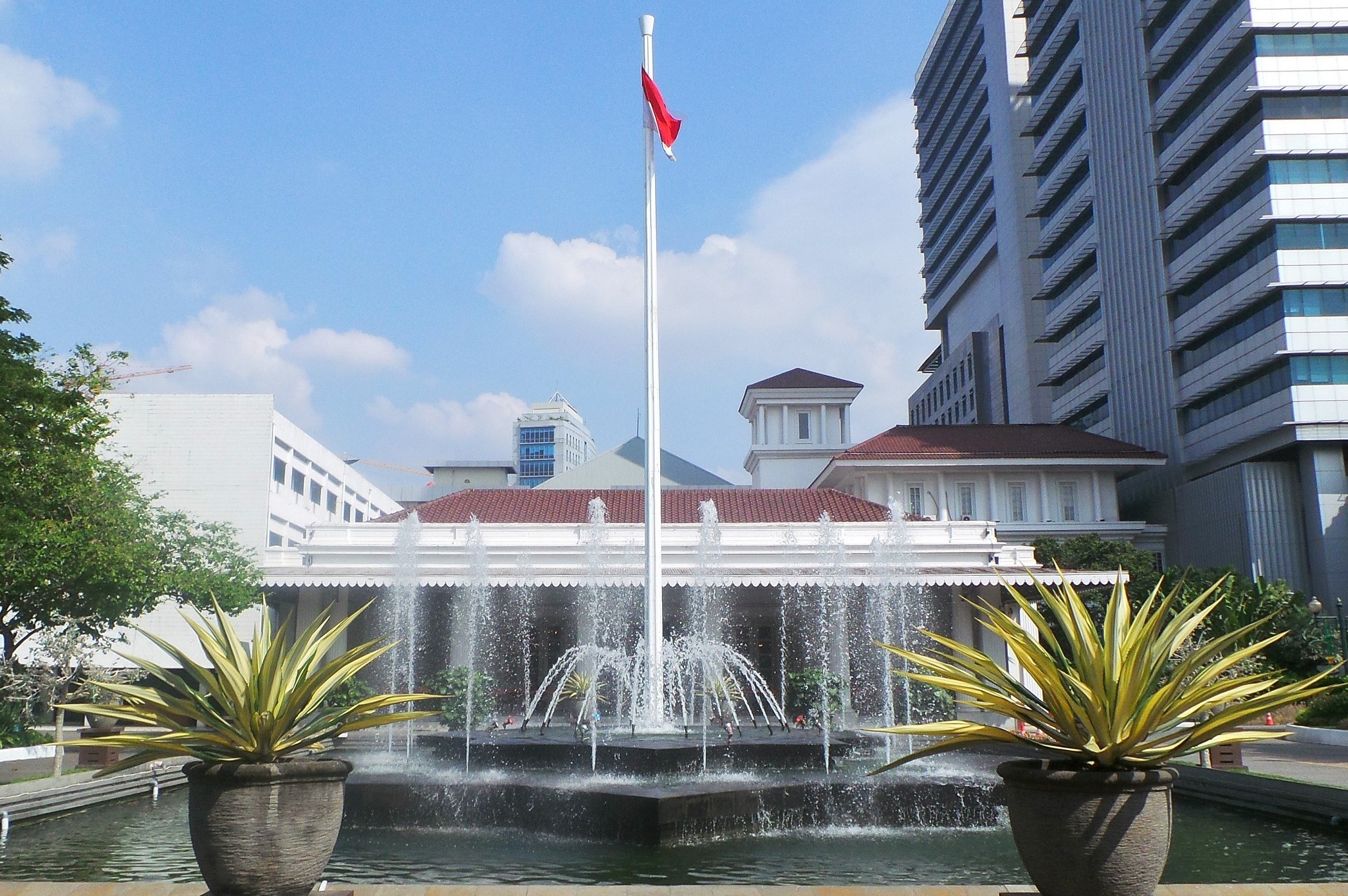 Etymology
Etymology
Jakarta has been home to multiple settlements. Below is the list of names used during its existence.
Sunda Kelapa (397–1527)
Jayakarta (1527–1619)
Batavia (1619–1942)
Djakarta (1942–1972)
Jakarta (1972–present)
Its name ‘Jakarta’ derives from the word Jayakarta (Devanagari: जयकर्त) which is ultimately derived from the Sanskrit जय jaya (victorious) and कृत krta (accomplished, acquired), thus Jayakarta translates as ‘victorious deed’, ‘complete act’ or ‘complete victory’.
It was named after Muslim troops of Fatahillah successfully defeated and drove out the Portuguese away from the city in 1527. Before it was called Jayakarta, the city was known as ‘Sunda Kelapa’. Tomé Pires, a Portuguese apothecary during his journey to East Indies, wrote the city name on his magnum opus as Jacatra or Jacarta.
In the 17th century, the city was also known as Koningin van het Oosten (Queen of the Orient), for the urban beauty of downtown Batavia’s canals, mansions and ordered city layout. After expanding to the south in the 19th century, this nickname came to be more associated with the suburbs (e.g. Menteng and the area around Merdeka Square), with their wide lanes, green spaces and villas. During the Japanese occupation, the city was renamed as Jakaruta Tokubetsu-shi (ジャカルタ特別市, Jakarta Special City).
The official name used is Daerah Khusus Ibukota Jakarta, which literally means Jakarta Capital Special Region.
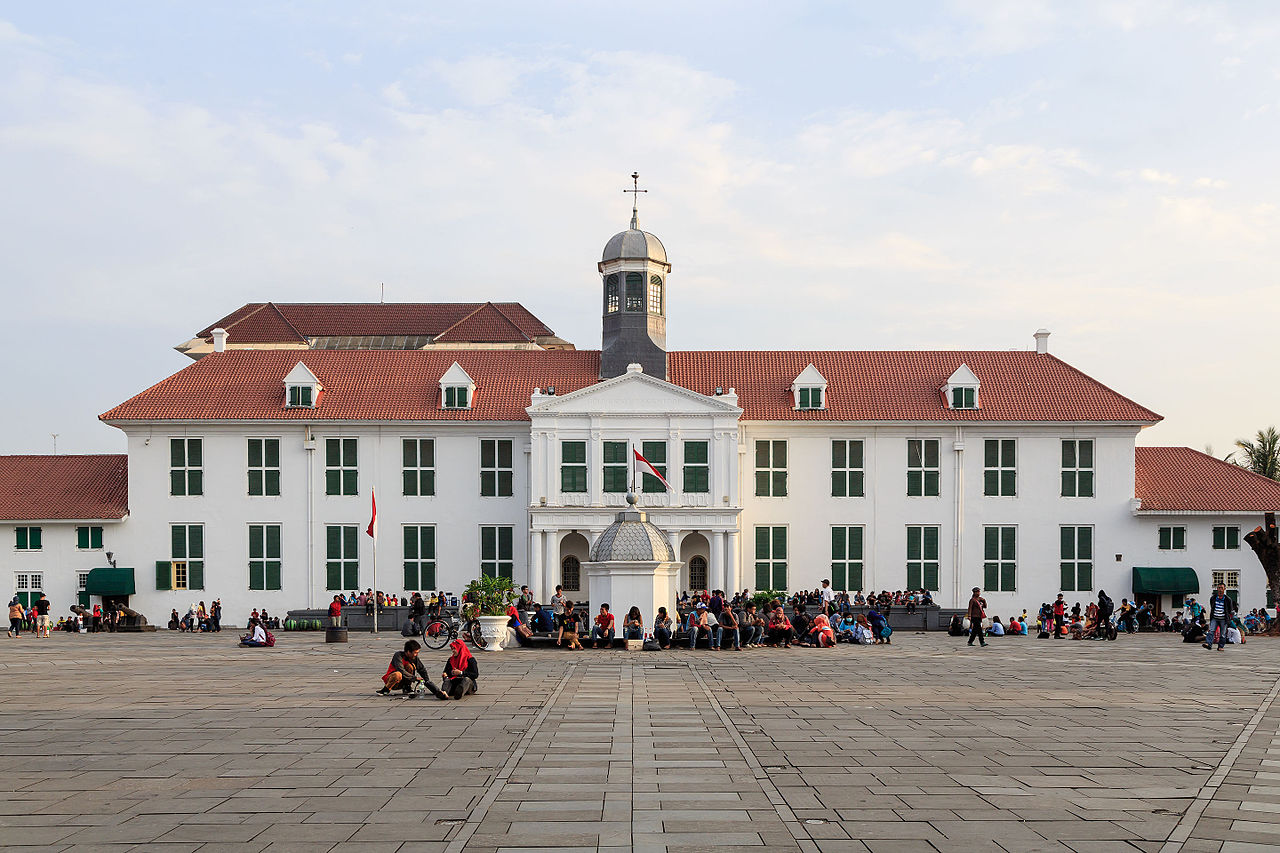 History
History
After World War II ended, Indonesian nationalists declared independence on 17 August 1945, and the government of the Jakarta City was changed into the Jakarta National Administration in the following month. During the Indonesian National Revolution, Indonesian Republicans withdrew from Allied-occupied Jakarta and established their capital in Yogyakarta.
After securing full independence, Jakarta again became the national capital in 1950. With Jakarta selected to host the 1962 Asian Games, Sukarno, envisaging Jakarta as a great international city, instigated large government-funded projects with openly nationalistic and modernist architecture. Projects included a cloverleaf interchange, a major boulevard (Jalan MH Thamrin-Sudirman), monuments such as The National Monument, Hotel Indonesia, a shopping centre, and a new building intended to be the headquarters of CONEFO.
In October 1965, Jakarta was the site of an abortive coup attempt in which six top generals were killed, precipitating a violent anti-communist purge which killed at least 500,000 people, including some ethnic Chinese. The event marked the beginning of Suharto’s New Order. The first government was led by a mayor until the end of 1960 when the office was changed to that of a governor. The last mayor of Jakarta was Soediro until he was replaced by Soemarno Sosroatmodjo as governor. Based on law No. 5 of 1974 relating to regional governments, Jakarta was confirmed as the capital of Indonesia and one of the country’s then 26 provinces.
In 1966, Jakarta was declared a ‘special capital region’ (Daerah Khusus Ibukota), with a status equivalent to that of a province. Lieutenant General Ali Sadikin served as governor from 1966 to 1977; he rehabilitated roads and bridges, encouraged the arts, built hospitals and a large number of schools. He cleared out slum dwellers for new development projects, and attempted to eliminate rickshaws and ban street vendors. He began control of migration to the city to stem overcrowding and poverty. Foreign investment contributed to a real estate boom that transformed the face o f Jakarta.
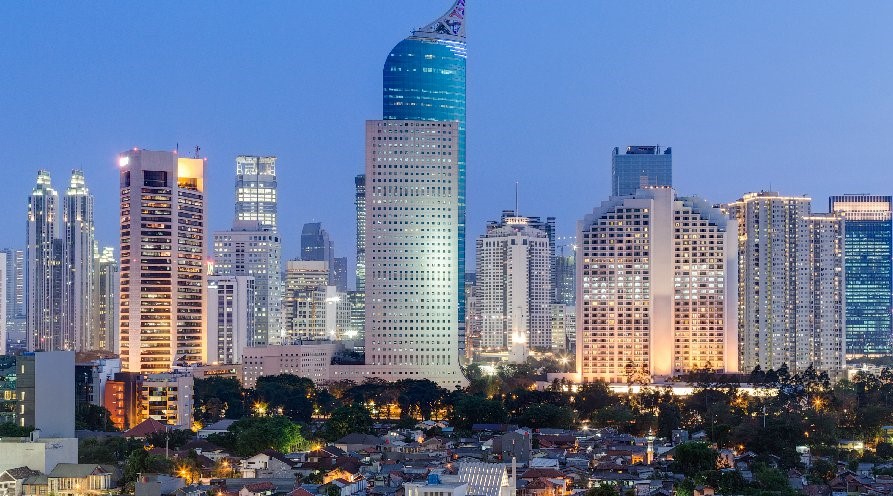 Government
Government
Jakarta is administratively equal to a province with special status. The executive branch is headed by an elected governor and a vice governor, while the Jakarta Regional People’s Representative Council (Indonesian: Dewan Perwakilan Rakyat Daerah Provinsi Daerah Khusus Ibukota Jakarta, DPRD DKI Jakarta) is the legislative branch with 106 directly elected members. The Jakarta City Hall at the south of Merdeka Square houses the office of the governor and the vice governor, and serves the main administrative office.
Executive governance consists of five administrative cities (Indonesian: Kota Administrasi), each headed by a mayor and one administrative regency (Indonesian: Kabupaten Administrasi) headed by a regent (bupati). Unlike other cities and regencies in Indonesia where the mayor or regent are directly elected, Jakarta’s mayors and regents are chosen by the governor. Each city and regency is divided into administrative districts.
Aside from representatives to the provincial parliament, Jakarta sends 21 delegates to the national lower house parliament. The representatives are elected from Jakarta’s three national electoral districts, which also includes overseas voters. It also sends 4 delegates, just like other provinces, to the national upper house parliament.
The Jakarta Smart City (JSC) program was launched on 14 December 2014 with a goal for smart governance, smart people, smart mobility, smart economy, smart living and a smart environment in the city using the web and various smartphone-based apps.
 Geography
Geography
Jakarta covers 699.5 square kilometres (270.1 sq mi), the smallest among any Indonesian provinces. However, its metropolitan area covers 6,392 square kilometres (2,468 sq mi), which extends into two of the bordering provinces of West Java and Banten. The Greater Jakarta area includes three bordering regencies (Bekasi Regency, Tangerang Regency and Bogor Regency) and five adjacent cities (Bogor, Depok, Bekasi, Tangerang and South Tangerang).
Topography
Jakarta is situated on the northwest coast of Java, at the mouth of the Ciliwung River on Jakarta Bay, an inlet of the Java Sea. The northern part of Jakarta is plain land, some areas of which are below sea level and subject to frequent flooding. The southern parts of the city are hilly. It is one of only two Asian capital cities located in the southern hemisphere (along with East Timor’s Dili). Officially, the area of the Jakarta Special District is 662 km2 (256 sq mi) of land area and 6,977 km2 (2,694 sq mi) of sea area. The Thousand Islands, which are administratively a part of Jakarta, are located in Jakarta Bay, north of the city.
Jakarta lies in a low and flat alluvial plain, ranging from −2 to 50 metres (−7 to 164 ft) with an average elevation of 8 metres (26 ft) above sea level with historically extensive swampy areas. Thirteen rivers flow through Jakarta. They are Ciliwung River, Kalibaru, Pesanggrahan, Cipinang, Angke River, Maja, Mookervart, Krukut, Buaran, West Tarum, Cakung, Petukangan, Sunter River and Grogol River. They flow from the Puncak highlands to the south of the city, then across the city northwards towards the Java Sea. The Ciliwung River divides the city into the western and eastern districts. Banjir Kanal Barat (west flood-control canal). These rivers, combined with the wet season rains and insufficient drainage due to clogging, make Jakarta prone to flooding. This flooding is related to climate change.

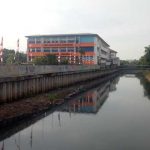
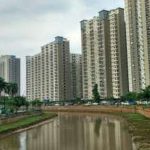
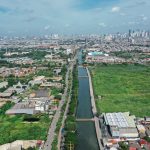
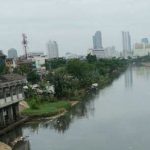

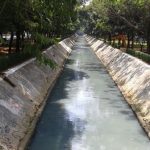
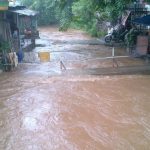
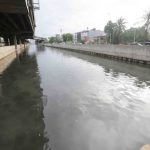
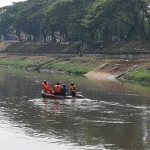
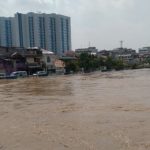

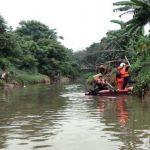
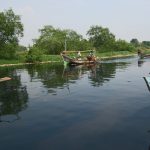
 Moreover, Jakarta is sinking about 5 to 10 centimetres (2.0 to 3.9 inches) each year, and up to 20 centimetres (7.9 inches) in the northern coastal areas. After a feasibility study, a ring dyke is under construction around Jakarta Bay to help cope with the threat from the sea. The dyke will be equipped with a pumping system and retention areas to defend against seawater and function as a toll road. The project, known as Giant Sea Wall Jakarta, is expected to be completed by 2025.
Moreover, Jakarta is sinking about 5 to 10 centimetres (2.0 to 3.9 inches) each year, and up to 20 centimetres (7.9 inches) in the northern coastal areas. After a feasibility study, a ring dyke is under construction around Jakarta Bay to help cope with the threat from the sea. The dyke will be equipped with a pumping system and retention areas to defend against seawater and function as a toll road. The project, known as Giant Sea Wall Jakarta, is expected to be completed by 2025.
In January 2014, the central government agreed to build two dams in Ciawi, Bogor and a 1.2-kilometre (0.75-mile) tunnel from Ciliwung River to Cisadane River to ease flooding in the city.
Nowadays, a 1.2-kilometre (0.75-mile), with capacity 60 cubic metres (2,100 cubic feet) per second, underground water tunnel between Ciliwung River and the East Flood Canal is being worked on to ease the Ciliwung River overflows.
Climate
Jakarta has a tropical monsoon climate (Am) according to the Köppen climate classification system. The wet season in Jakarta covers the majority of the year, running from October through May. The remaining four months (June through September) constitute the city’s drier season (each of these four months has an average monthly rainfall of fewer than 100 millimetres (3.9 in)). Technically speaking, however, only August qualifies as the genuine dry season month, as it has less than 60 millimetres (2.4 in) of rainfall. Located in the western part of Java, Jakarta’s wet season rainfall peaks in January and February with average monthly rainfall of 297.7 millimetres (11.72 in), and its dry season’s low point is in August with a monthly average of 43.2 mm (1.70 in).
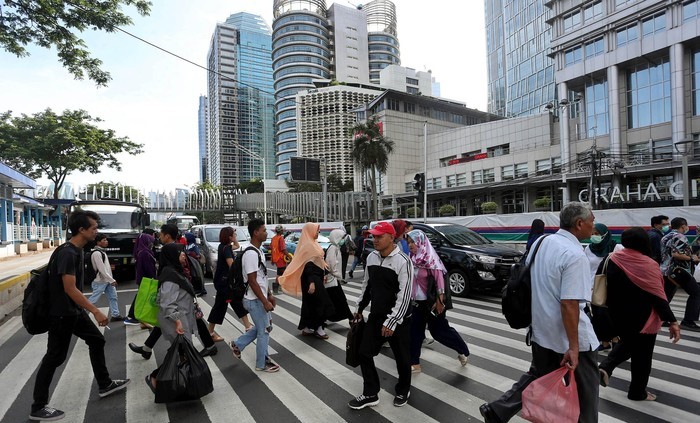 Demographic
Demographic
Jakarta attracts people from across Indonesia, often in search of employment. The 1961 census showed that 51% of the city’s population was born in Jakarta. Inward immigration tended to negate the effect of family planning programs.
Between 1961 and 1980, the population of Jakarta doubled, and during the period 1980–1990, the city’s population grew annually by 3.7%. The 2010 census counted some 9.58 million people, well above government estimates. The population rose from 4.5 million in 1970 to 9.5 million in 2010, counting only legal residents, while the population of Greater Jakarta rose from 8.2 million in 1970 to 28.5 million in 2010.
As per 2014, the population of Jakarta stood at ten million, with a population density of 15,174 people/km2. In 2014, the population of Greater Jakarta was 30 million, accounting for 11% of Indonesia’s overall population. It is predicted to reach 35.6 million people by 2030 to become the world’s biggest megacity. The gender ratio was 102.8 (males per 100 females) in 2010 and 101.3 in 2014.
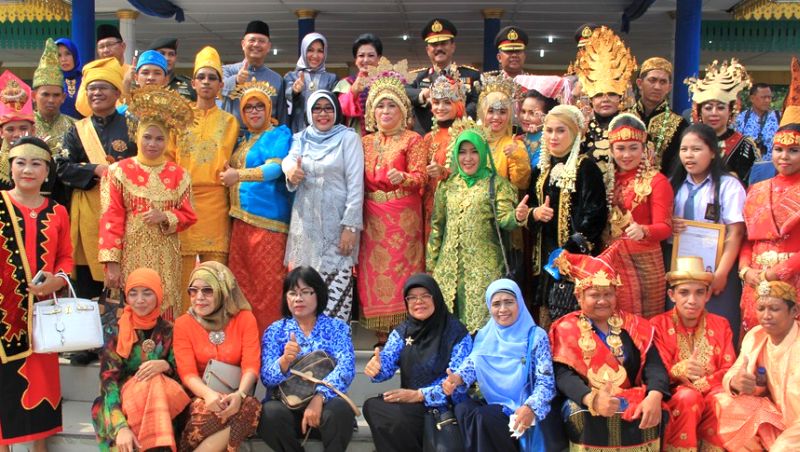 Ethnicity
Ethnicity
Jakarta is a pluralistic and religiously diverse city. As of the 2010 Census, 36.17% of the city’s population were Javanese, 28.29% Betawi, 14.61% Sundanese, 6.62% Chinese, 3.42% Batak, 2.85% Minangkabau, 0.96% Malays, Indo and others 7.08%.
The ‘Betawi’ (Orang Betawi, or ‘people of Batavia’) are the descendants of the people living in and around Batavia who became recognised as an ethnic group around the 18th–19th century. They mostly descend from Southeast Asian ethnic groups brought or attracted to Batavia to meet labour needs.
Betawi people are a creole ethnic group who came from various parts of Indonesia and intermarried with Chinese, Arabs and Europeans. Betawi form a minority in the city; most lived in the fringe areas of Jakarta with hardly any Betawi-dominated regions of central Jakarta. The Chinese in Jakarta praying during Chinese New Year in Glodok, Jakarta
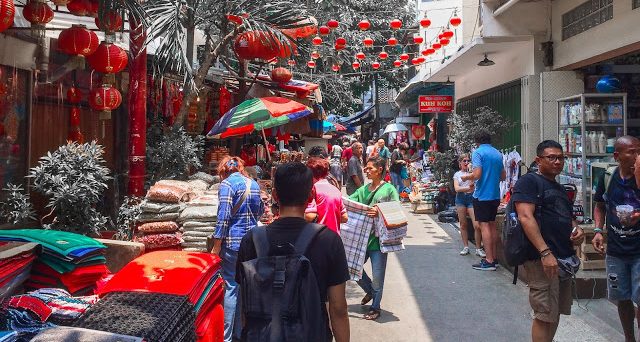 A significant Chinese community has lived in Jakarta for many centuries. They traditionally reside around old urban areas, such as Pinangsia, Pluit and Glodok (Jakarta Chinatown) areas. They also can be found in the old Chinatowns of Senen and Jatinegara. Officially, they make up 5.53% of the Jakarta population, although this number may be under-reported.
A significant Chinese community has lived in Jakarta for many centuries. They traditionally reside around old urban areas, such as Pinangsia, Pluit and Glodok (Jakarta Chinatown) areas. They also can be found in the old Chinatowns of Senen and Jatinegara. Officially, they make up 5.53% of the Jakarta population, although this number may be under-reported.
The Sumatran residents are diverse. According to the 2010 Census, roughly 346,000 Batak, 305,000 Minangkabau, and 155,000 Malays lived in the city. The number of Batak people has grown in ranking, from eighth in 1930 to fifth in 2000.
Toba Batak is the largest sub-ethnic Batak group in Jakarta. Minangkabau people generally work as merchants, peddlers, and artisans, with more in white-collar professions, such as doctors, teachers and journalists.
 Language
Language
Indonesian is the official and dominant language of Jakarta, while many elderly people speak Dutch or Chinese, depending on their upbringing. English is also widely used for communication, especially in Central and South Jakarta. Each of the ethnic groups uses their mother language at home, such as Betawi, Javanese, and Sundanese.
The Betawi language is distinct from those of the Sundanese or Javanese, forming itself as a language island in the surrounding area. It is mostly based on the East Malay dialect and enriched by loan words from Dutch, Portuguese, Sundanese, Javanese, Minangkabau, Chinese, and Arabic.
 Religion
Religion
In 2017, Jakarta’s religious composition was distributed over Islam (83.43%), Protestantism (8.63%), Catholicism (4.0%), Buddhism (3.74%), Hinduism (0.19%), and Confucianism (0.01%). About 231 people claimed to follow folk religions.
Most pesantren (Islamic boarding schools) in Jakarta are affiliated with the traditionalist Nahdlatul Ulama, modernist organisations mostly catering to a socioeconomic class of educated urban elites and merchant traders. They give priority to education, social welfare programs and religious propagation. Many Islamic organisations have headquarters in Jakarta, including Nahdlatul Ulama, Indonesian Ulema Council, Muhammadiyah, Jaringan Islam Liberal, and Front Pembela Islam.
The Roman Catholic community has a Metropolis, the Archdiocese of Jakarta that includes West Java as part of the ecclesiastical province. There is also a Baháʼí Faith community.
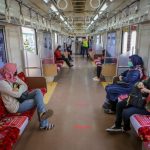
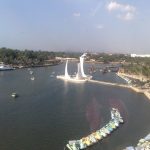





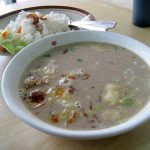

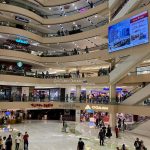
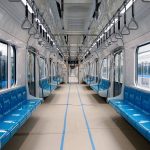

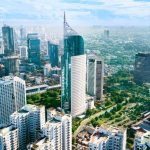
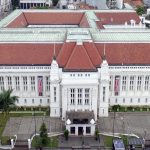

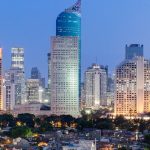
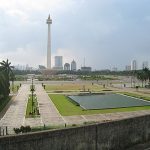
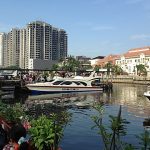



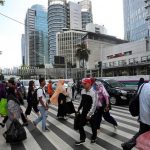
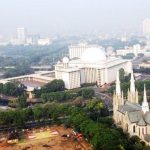

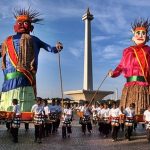
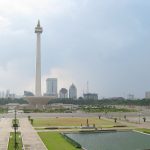
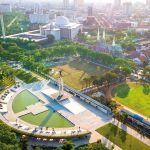
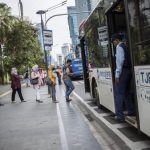
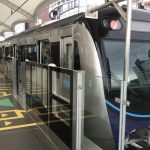
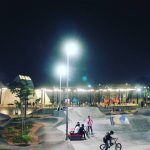
As the capital of Indonesia, Jakarta is the melting point of cultures of all ethnic groups of the country. Though Betawi people are considered as an indigenous community of Jakarta, the culture of the city represents many languages and ethnic groups, support differences in regard to religion, traditions and linguistics, rather than any single and dominant culture.
 Arts and festivals
Arts and festivals
The Betawi culture is distinct from those of the Sundanese or Javanese, forming a language island in the surrounding area. Betawi arts have a low profile in Jakarta, and most Betawi people have moved to the suburbs. The cultures of the Javanese and other Indonesian ethnic groups have a higher profile than that of the Betawi. There is a significant Chinese influence in Betawi culture, reflected in the popularity of Chinese cakes and sweets, firecrackers and Betawi wedding attire that demonstrates Chinese and Arab influences.
Some festivals such as the Jalan Jaksa Festival, Kemang Festival, Festival Condet and Lebaran Betawi include efforts to preserve Betawi arts by inviting artists to display performances. Jakarta has several performing art centres, such as the classical concert hall Aula Simfonia Jakarta in Kemayoran, Taman Ismail Marzuki (TIM) art centre in Cikini, Gedung Kesenian Jakarta near Pasar Baru, Balai Sarbini in the Plaza Semanggi area, Bentara Budaya Jakarta in the Palmerah area, Pasar Seni (Art Market) in Ancol, and traditional Indonesian art performances at the pavilions of some provinces in Taman Mini Indonesia Indah. Traditional music is often found at high-class hotels, including Wayang and Gamelan performances. Javanese Wayang Orang performances can be found at Wayang Orang Bharata theatre.
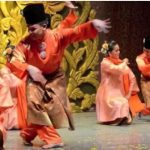
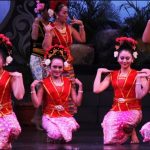
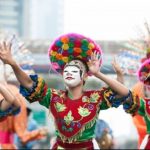
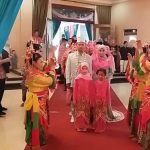
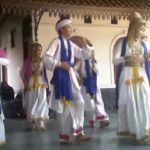
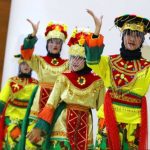

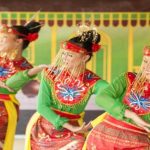
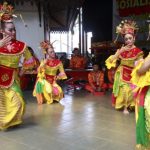

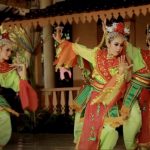
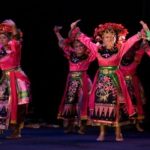

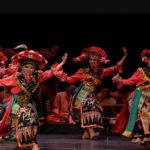
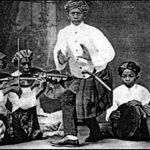
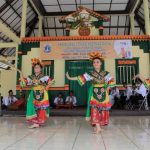
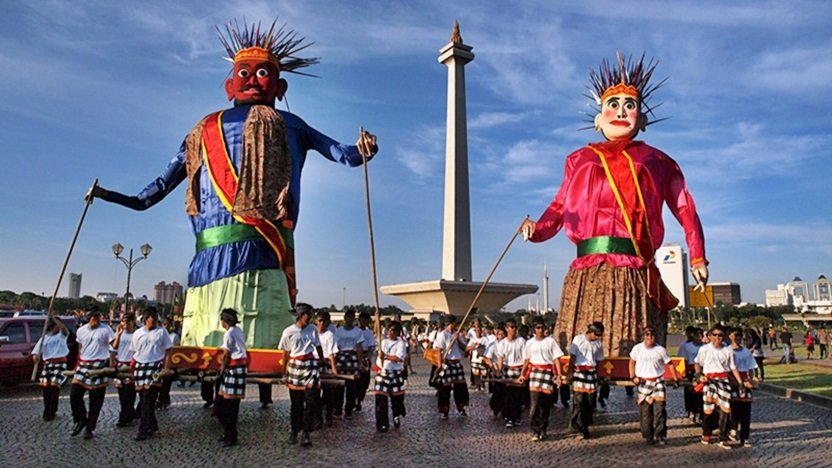 Arts and culture festivals and exhibitions include the annual ARKIPEL – Jakarta International Documentary and Experimental Film Festival, Jakarta International Film Festival (JiFFest), Djakarta Warehouse Project, Jakarta Fashion Week, Jakarta Fashion & Food Festival (JFFF), Jakarnaval, Jakarta Night Festival, Kota Tua Creative Festival, Indonesia International Book Fair (IIBF), Indonesia Creative Products and Jakarta Arts and Crafts exhibition.
Arts and culture festivals and exhibitions include the annual ARKIPEL – Jakarta International Documentary and Experimental Film Festival, Jakarta International Film Festival (JiFFest), Djakarta Warehouse Project, Jakarta Fashion Week, Jakarta Fashion & Food Festival (JFFF), Jakarnaval, Jakarta Night Festival, Kota Tua Creative Festival, Indonesia International Book Fair (IIBF), Indonesia Creative Products and Jakarta Arts and Crafts exhibition.
Art Jakarta is a contemporary art fair, which is held annually. Flona Jakarta is a flora-and-fauna exhibition, held annually in August at Lapangan Banteng Park, featuring flowers, plant nurseries, and pets. Jakarta Fair is held annually from mid-June to mid-July to celebrate the anniversary of the city and is mostly centred around a trade fair. However, this month-long fair also features entertainment, including arts and music performances by local musicians. Jakarta International Java Jazz Festival (JJF) is one of the largest jazz festivals in the world and arguably the biggest in the Southern hemisphere, and is held annually in March.
Several foreign art and culture centres in Jakarta promote culture and language through learning centres, libraries and art galleries. These include the Chinese Confucius Institute, the Dutch Erasmus Huis, the British Council, the French Alliance Française, the German Goethe-Institut, the Japan Foundation, and the Jawaharlal Nehru Indian Cultural Center.
 Cuisine
Cuisine
All varieties of Indonesian cuisine have a presence in Jakarta. The local cuisine is Betawi cuisine, which reflects various foreign culinary traditions. Betawi cuisine is heavily influenced by Malay-Chinese Peranakan cuisine, Sundanese and Javanese cuisine, which is also influenced by Indian, Arabic and European cuisines.
One of the most popular local dishes of Betawi cuisine is Soto Betawi which is prepared from chunks of beef and offal in rich and spicy cow’s milk or coconut milk broth. Other popular Betawi dishes include soto kaki, nasi uduk, kerak telor (spicy omelette), nasi ulam, asinan, ketoprak, rujak and gado-gado Betawi (salad in peanut sauce).
Jakarta cuisine can be found in modest street-side warung food stalls and kaki lima (five legs) travelling vendors to high-end fine dining restaurants. Live music venues and exclusive restaurants are abundant. Many traditional foods from far-flung regions in Indonesia can be found in Jakarta. For example, traditional Padang restaurants and low-budget Warteg (Warung Tegal) food-stalls are ubiquitous in the capital. Other popular street foods include nasi goreng (fried rice), sate (skewered meats), pecel lele (fried catfish), bakso (meatballs), bakpau (Chinese bun) and siomay (fish dumplings).
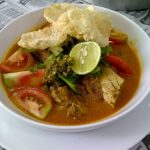







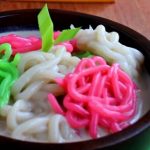

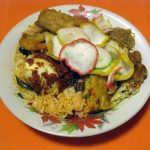
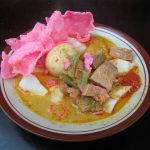

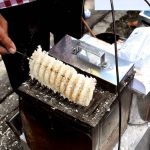
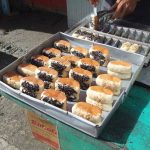

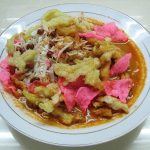


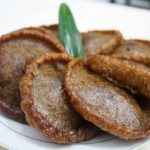

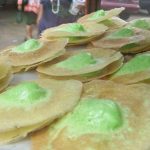

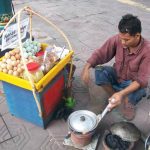


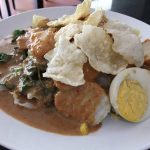





 Jalan Sabang, Jalan Sidoarjo, Jalan Kendal at Menteng area, Kota Tua, Blok S, Blok M, Jalan Tebet are all popular destinations for street-food lovers. Trendy restaurants, cafe and bars can be found at Menteng, Kemang, Jalan Senopati, Kuningan, Senayan, Pantai Indah Kapuk, and Kelapa Gading. Chinese street-food is plentiful at Jalan Pangeran, Manga Besar and Petak Sembilan in the old Jakarta area, while the Little Tokyo area of Blok M has many Japanese style restaurants and bars.
Jalan Sabang, Jalan Sidoarjo, Jalan Kendal at Menteng area, Kota Tua, Blok S, Blok M, Jalan Tebet are all popular destinations for street-food lovers. Trendy restaurants, cafe and bars can be found at Menteng, Kemang, Jalan Senopati, Kuningan, Senayan, Pantai Indah Kapuk, and Kelapa Gading. Chinese street-food is plentiful at Jalan Pangeran, Manga Besar and Petak Sembilan in the old Jakarta area, while the Little Tokyo area of Blok M has many Japanese style restaurants and bars.
Lenggang Jakarta is a food court, accommodating small traders and street vendors, where Indonesian foods are available within a single compound. At present, there are two such food courts, located at Monas and Kemayoran. Thamrin 10 is a food and creative park located at Menteng, where varieties of food stall are available.
Global fast-food chains like McDonald’s, KFC, Burger King, Carl’s Jr., Wendy’s, A&W, Fatburger, Johnny Rockets, Starbucks, Dunkin’ Donuts are present, along with local brands like J’CO, Es Teler 77, Kebab Turki, CFC, and Japanese HokBen. Foreign cuisines such as Chinese, Japanese, Korean, Thai, Indian, American, French, Mediterranean cuisine’s like Turkish, Italian, Middle-Eastern cuisine, and modern fusion food restaurants can all be found in Jakarta.
Kabupaten & Kotamadya
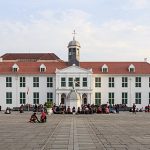
Jakarta Barat

Jakarta Selatan

Jakarta Utara
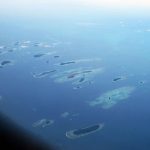
Kepulauan Seribu
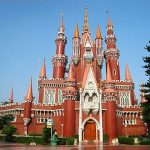
Jakarta Timur

Jakarta Pusat
Transport
 As a metropolitan area of about 30 million people, Jakarta has a variety of transport systems. Jakarta was awarded 2021 global Sustainable Transport Award (STA) for integrated public transportation system.
As a metropolitan area of about 30 million people, Jakarta has a variety of transport systems. Jakarta was awarded 2021 global Sustainable Transport Award (STA) for integrated public transportation system.
The city prioritised development of road networks, which were mostly designed to accommodate private vehicles. A notable feature of Jakarta’s present road system is the toll road network. Composed of an inner and outer ring road and five toll roads radiating outwards, the network provides inner as well as outer city connections. An ‘odd-even’ policy limits road use to cars with either odd or even-numbered registration plates on a particular day as a transitional measure to alleviate traffic congestion until the future introduction of electronic road pricing.
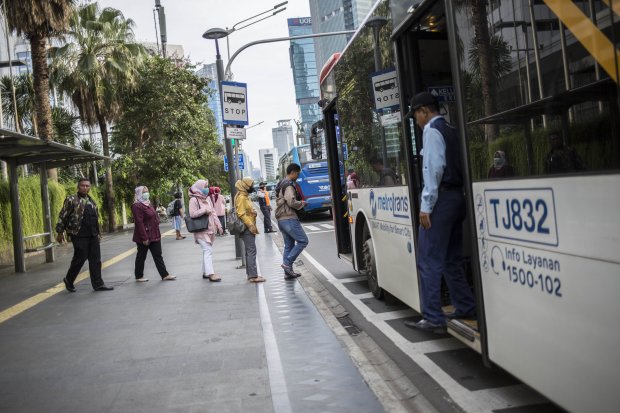 There are many bus terminals in the city, from where buses operate on numerous routes to connect neighborhoods within the city limit, to other areas of Greater Jakarta area and to cities across the island of Java. The biggest of the bus terminal is Pulo Gebang Bus Terminal, which is arguably the largest of its kind in Southeast Asia. Main terminus for long distance train services are Gambir and Pasar Senen. High-speed railways being constructed connecting Jakarta to Bandung and another one is at planning stage from Jakarta to Surabaya.
There are many bus terminals in the city, from where buses operate on numerous routes to connect neighborhoods within the city limit, to other areas of Greater Jakarta area and to cities across the island of Java. The biggest of the bus terminal is Pulo Gebang Bus Terminal, which is arguably the largest of its kind in Southeast Asia. Main terminus for long distance train services are Gambir and Pasar Senen. High-speed railways being constructed connecting Jakarta to Bandung and another one is at planning stage from Jakarta to Surabaya.
Rapid transit in Greater Jakarta consists of TransJakarta bus rapid transit, Jakarta LRT, Jakarta MRT, KRL Commuterline commuter rail, and Soekarno-Hatta Airport Rail Link. Another transit system Greater Jakarta LRT is expected to be operational by early 2021.
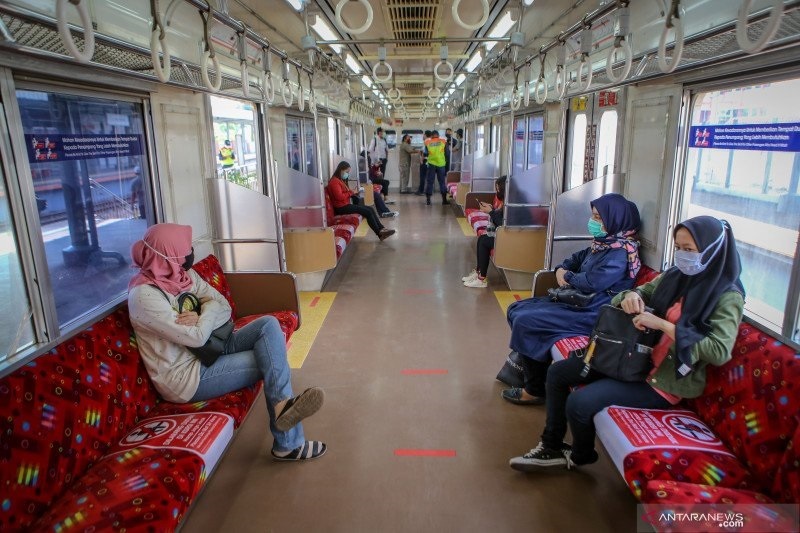 Privately owned bus systems like Kopaja, MetroMini, Mayasari Bakti and PPD also provide important services for Jakarta commuters with numerous routes throughout the city. Pedicabs are banned from the city for causing traffic congestion. Bajaj auto rickshaw provide local transportation in the back streets of some parts of the city. Angkot microbuses also play a major role in road transport of Jakarta. Taxicabs and ojeks (motorcycle taxis) are available in the city.
Privately owned bus systems like Kopaja, MetroMini, Mayasari Bakti and PPD also provide important services for Jakarta commuters with numerous routes throughout the city. Pedicabs are banned from the city for causing traffic congestion. Bajaj auto rickshaw provide local transportation in the back streets of some parts of the city. Angkot microbuses also play a major role in road transport of Jakarta. Taxicabs and ojeks (motorcycle taxis) are available in the city.
Soekarno–Hatta International Airport (CGK) is the main airport serving the Greater Jakarta area, while Halim Perdanakusuma Airport (HLP) accommodates private and low-cost domestic flights. Other airports in the Jakarta metropolitan area include Pondok Cabe Airport and an airfield on Pulau Panjang, part of the Thousand Island archipelago.
Indonesia’s busiest and Jakarta’s main seaport Tanjung Priok serves many ferry connections to different parts of Indonesia.The old port Sunda Kelapa only accommodate pinisi, a traditional two masted wooden sailing ship serving inter-island freight service in the archipelago. Muara Angke Port was renovated, which is used as a public port to Thousand Islands (Indonesia), while Marina Ancol Port ia used as a tourist port.
Parks
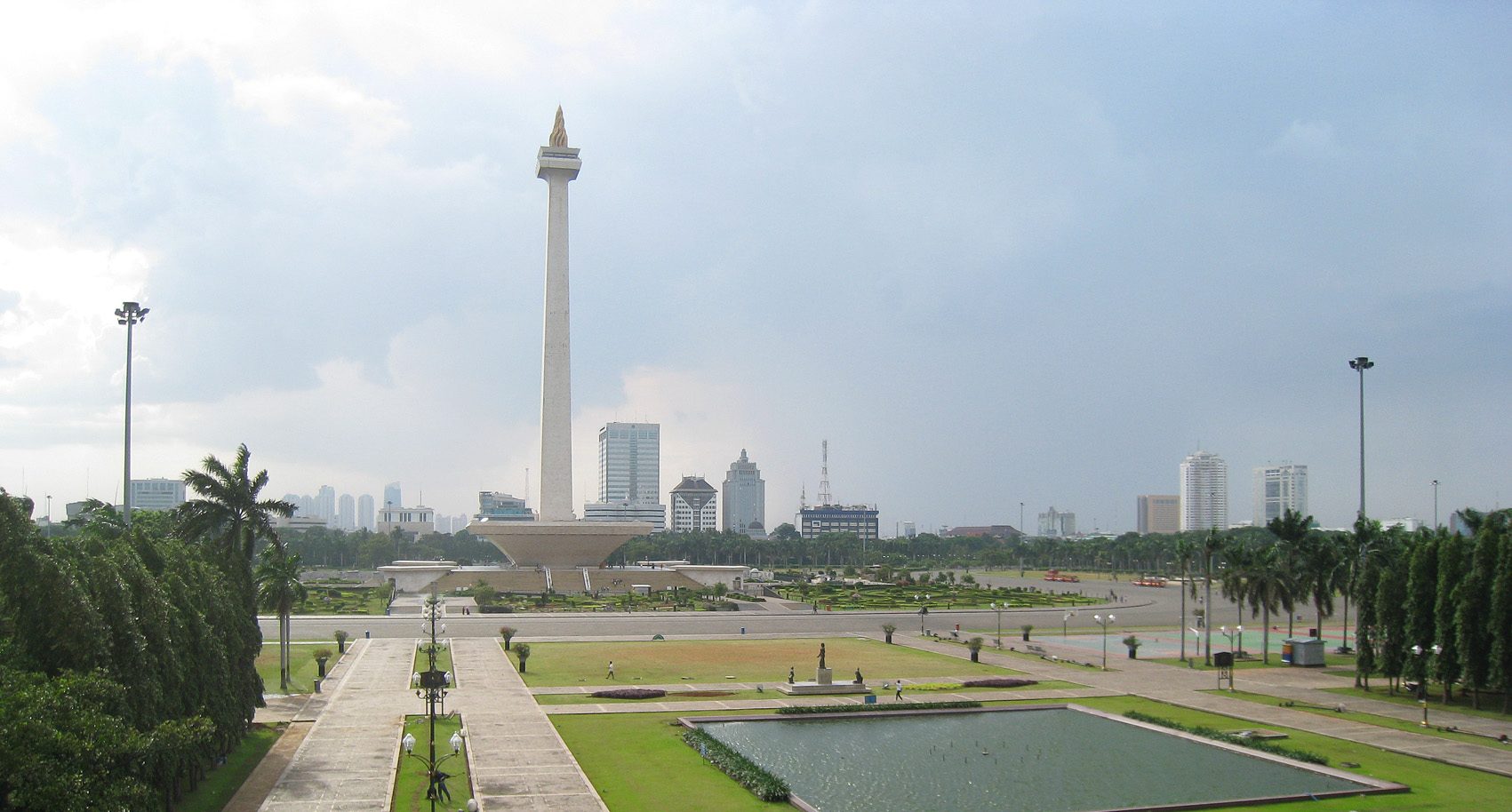 In June 2011, Jakarta had only 10.5% green open spaces (Ruang Terbuka Hijau), although this grew to 13.94%. Public parks are included in public green open spaces. There are about 300 integrated child-friendly public spaces (RPTRA) in the city in 2019. As of 2014, 183 water reservoirs and lakes supported the greater Jakarta area.
In June 2011, Jakarta had only 10.5% green open spaces (Ruang Terbuka Hijau), although this grew to 13.94%. Public parks are included in public green open spaces. There are about 300 integrated child-friendly public spaces (RPTRA) in the city in 2019. As of 2014, 183 water reservoirs and lakes supported the greater Jakarta area.
Merdeka Square (Medan Merdeka) is an almost 1 km2 field housing the symbol of Jakarta, Monas or Monumen Nasional (National Monument). Until 2000, it was the world’s largest city square. The square was created by Dutch Governor-General Herman Willem Daendels (1810) and was originally named Koningsplein (King’s Square).
On 10 January 1993, President Soeharto started the beautification of the square. Features including a deer park and 33 trees that represent the 33 provinces of Indonesia.
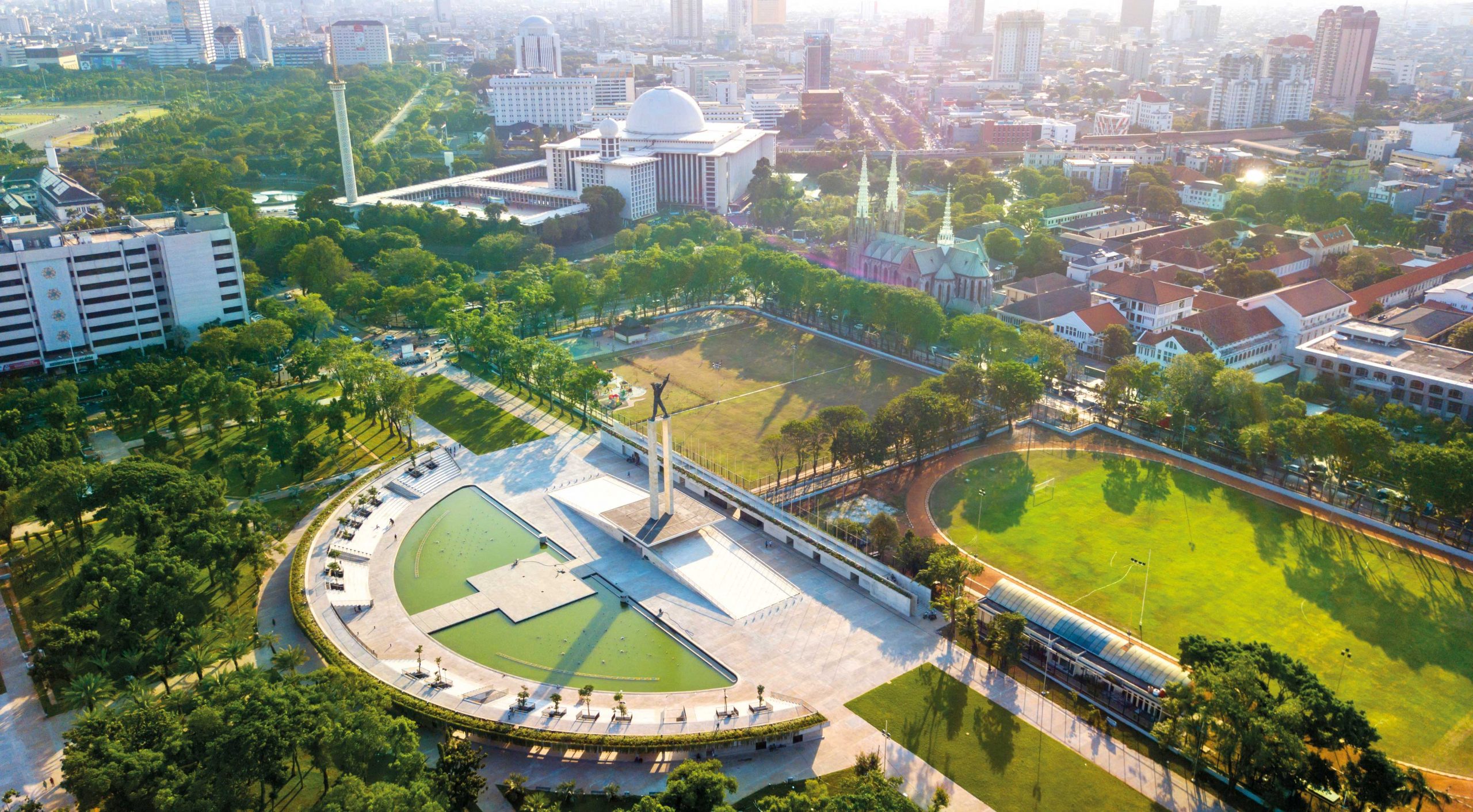 Lapangan Banteng (Buffalo Field) is located in Central Jakarta near Istiqlal Mosque, Jakarta Cathedral, and Jakarta Central Post Office.
Lapangan Banteng (Buffalo Field) is located in Central Jakarta near Istiqlal Mosque, Jakarta Cathedral, and Jakarta Central Post Office.
It covers about 4.5 hectares. Initially, it was called Waterlooplein and functioned as the ceremonial square during the colonial period. Colonial monuments and memorials erected on the square during the colonial period were demolished during the Sukarno era.
The most notable monument in the square is the Monumen Pembebasan Irian Barat (Monument of the Liberation of West Irian). During the 1970s and 1980s, the park was used as a bus terminal. In 1993, the park was again turned into a public space. It became a recreation place for people and now serves as an exhibition place or for other events. ‘Jakarta Flona’ (Flora dan Fauna), a flower and decoration plants and pet exhibition, is held in this park around August annually.


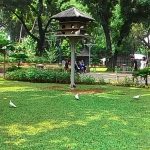
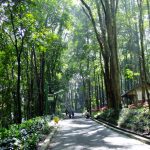
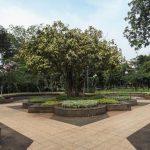



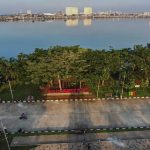
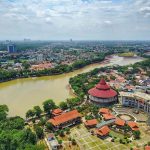

 Taman Mini Indonesia Indah (Miniature Park of Indonesia), in East Jakarta, has ten mini parks.
Taman Mini Indonesia Indah (Miniature Park of Indonesia), in East Jakarta, has ten mini parks.
Suropati Park is located in Menteng, Central Jakarta. The park is surrounded by Dutch colonial buildings. Taman Suropati was known as Burgemeester Bisschopplein during the colonial time. The park is circular-shaped with a surface area of 16,322 square metres (175,690 square feet). Several modern statues were made for the park by artists of ASEAN countries, which contributes to its nickname Taman persahabatan seniman ASEAN (‘Park of the ASEAN artists friendship’).
Menteng Park was built on the site of the former Persija football stadium. Situ Lembang Park is also located nearby, which has a lake at the centre.
Kalijodo Park is the newest park, in Penjaringan subdistrict, with 3.4 hectares (8.4 acres) beside the Krendang River. It formally opened on 22 February 2017. The park is open 24 hours as green open space (RTH) and child-friendly integrated public space (RPTRA) and has international-standard skateboard facilities.
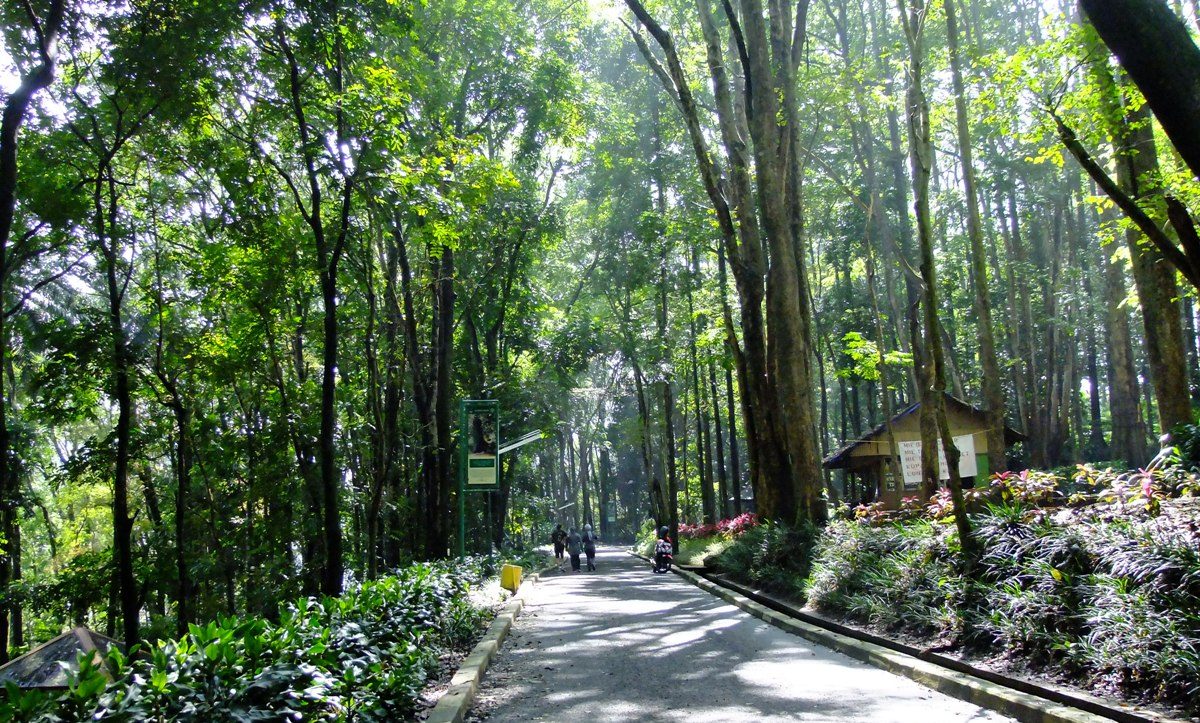 Muara Angke Wildlife Sanctuary and Angke Kapuk Nature Tourism Park at Penjaringan in North Jakarta.
Ragunan Zoo is located in Pasar Minggu, South Jakarta. It is the world’s third-oldest zoo and is the second-largest with the most diverse animal and plant populations.
Muara Angke Wildlife Sanctuary and Angke Kapuk Nature Tourism Park at Penjaringan in North Jakarta.
Ragunan Zoo is located in Pasar Minggu, South Jakarta. It is the world’s third-oldest zoo and is the second-largest with the most diverse animal and plant populations.
Setu Babakan is a 32-hectare lake surrounded by Betawi cultural village, located at Jagakarsa, South Jakarta. Dadap Merah Park is also found in this area.
Ancol Dreamland is the largest integrated tourism area in Southeast Asia. It is located along the bay, at Ancol in North Jakarta.
Taman Waduk Pluit/Pluit Lake park and Putra Putri Park at Pluit, North Jakarta.
Tebet Honda Park, Puring Park, Mataram Park, Taman Langsat and Taman Ayodya in South Jakarta.
